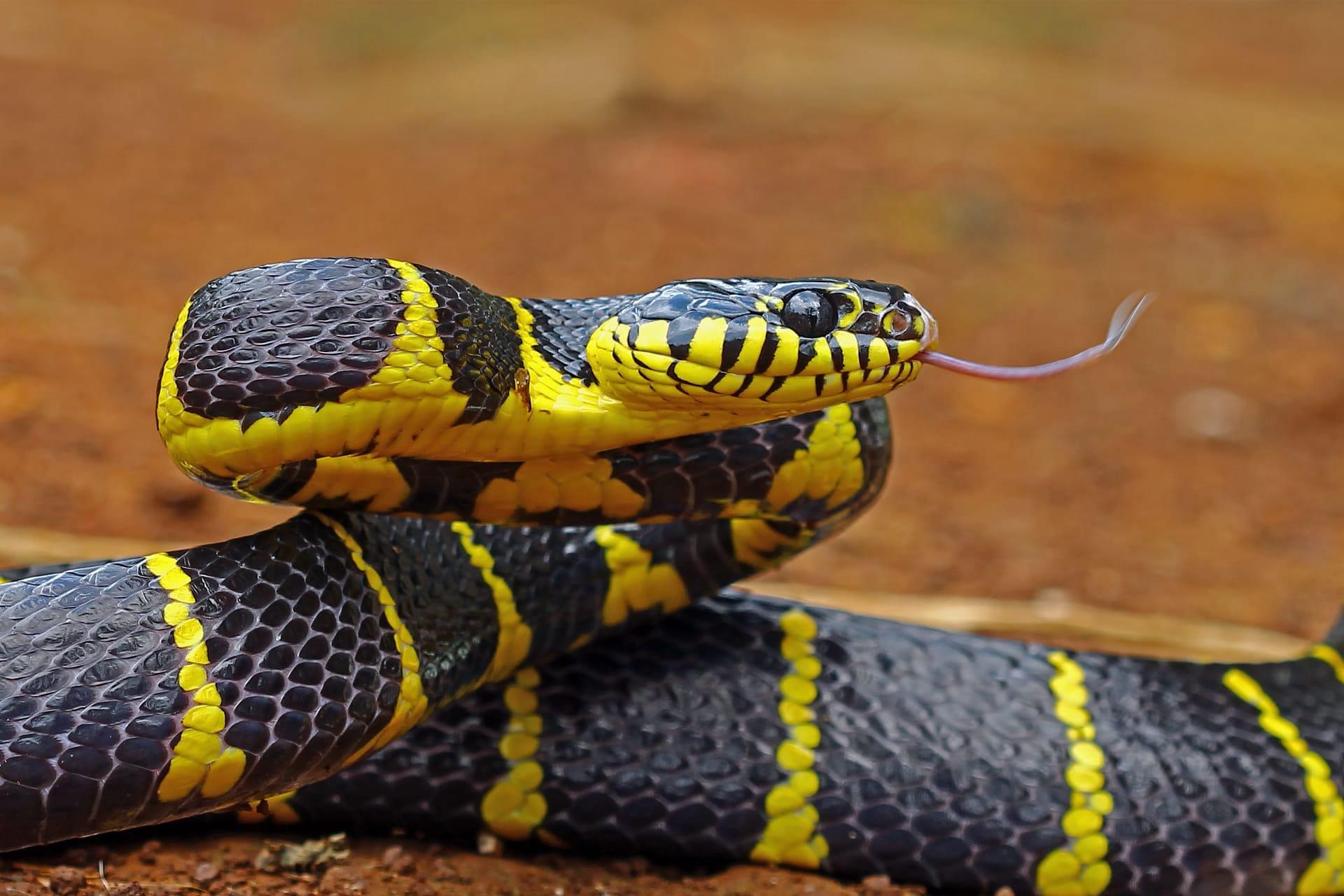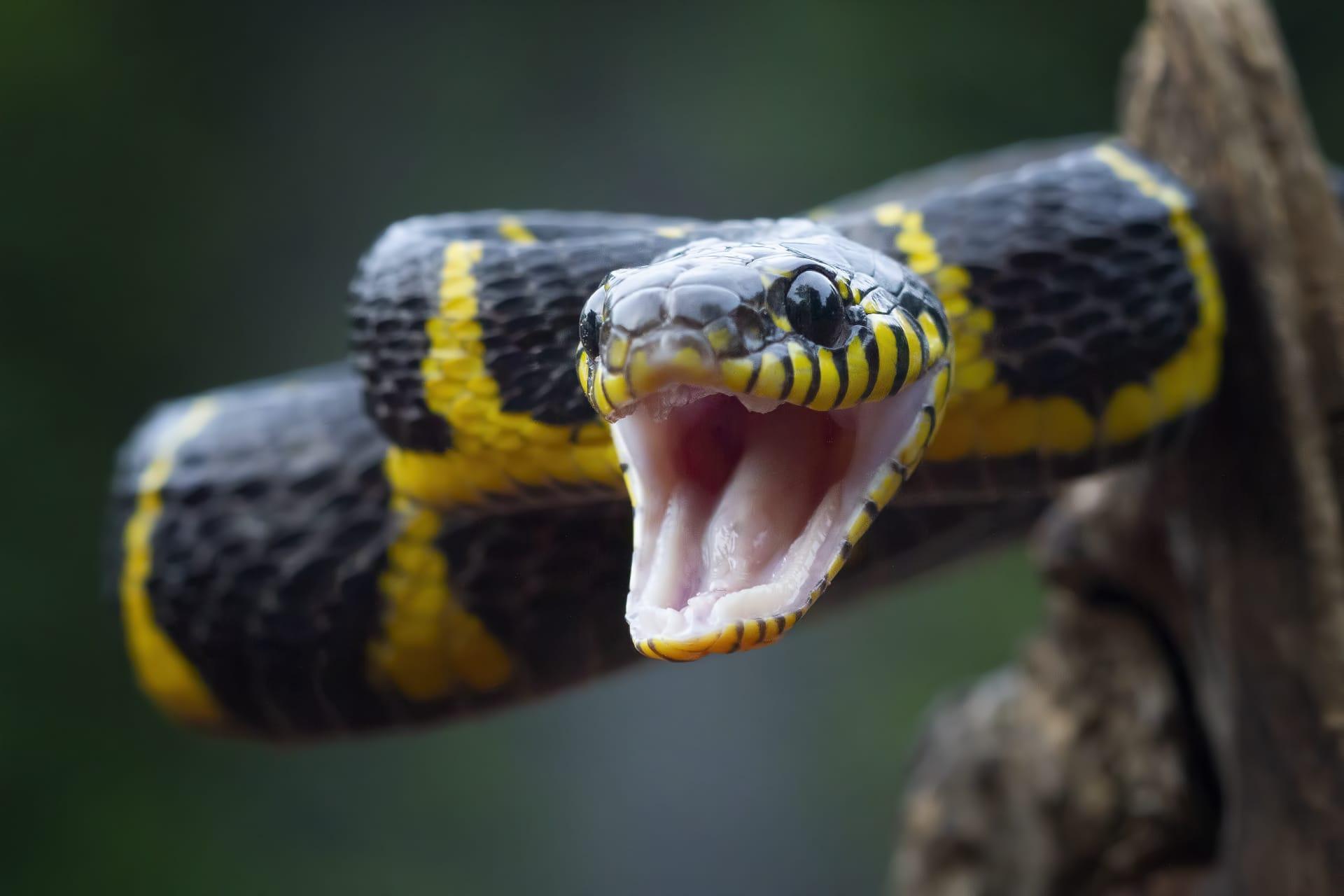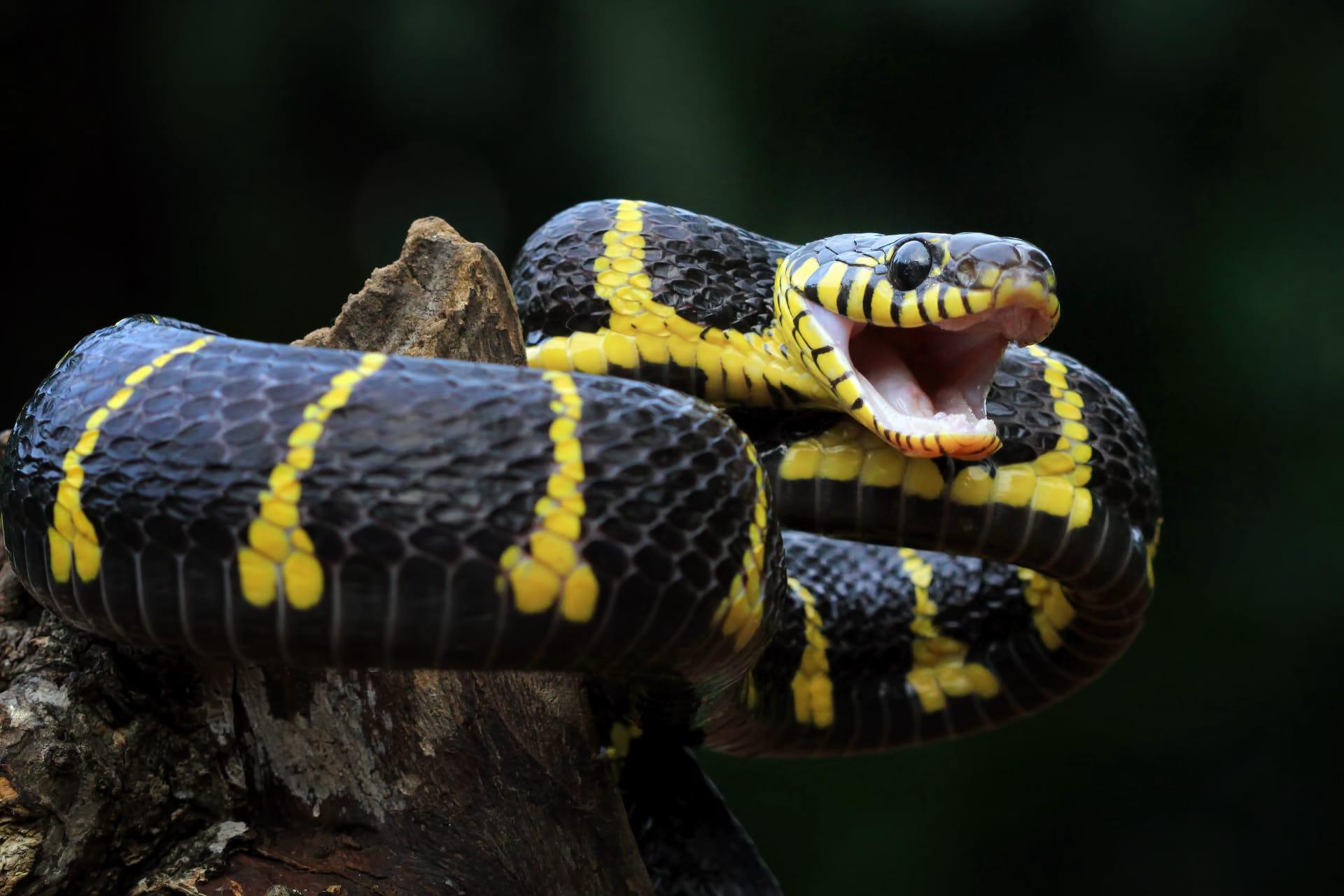Banded Krait Trivia
- Home /
- Trivia Question /
- Animal /
- Banded Krait Trivia
1
Question: What makes the Banded Krait's appearance distinct?
Answer: The Banded Krait, easily recognized by its striking pattern, showcases alternating black and yellow bands along its length. This serpent, typically measuring up to 2 meters (about 6.5 feet) in length, has a triangular cross-section body, giving it a unique, angular appearance. The bands are not only visually stunning but also serve as a warning signal to potential predators of its venomous nature.
Question: How venomous is the Banded Krait?
Answer: The venom of the Banded Krait contains potent neurotoxins, which can cause respiratory failure and paralysis in its victims. However, this snake is generally shy and avoids confrontation. It's important to note that its venom yield per bite is relatively low compared to other venomous snakes, but still, a bite from a Banded Krait requires immediate medical attention due to its potentially fatal effects.

2
Question: Is it true that Banded Kraits are only active at night?
Answer: Yes, the Banded Krait is primarily nocturnal. They are most active during the night and early dawn, hunting for their prey which includes other snakes, frogs, and small mammals. During the day, they often hide in rodent holes, under rocks, or in leaf litter, making them less visible to humans.
Question: Can Banded Kraits live in water?
Answer: While Banded Kraits are not aquatic snakes, they are quite capable swimmers. They can often be found near water sources like rice fields, swamps, and ponds. However, they spend most of their time on land and are more adapted to terrestrial habitats.

3
Question: What is the breeding behavior of the Banded Krait?
Answer: Banded Kraits breed during the warmer months, typically between April and August. The female lays a clutch of 8 to 12 eggs, which she leaves unattended. The eggs, about 6-7 centimeters in length, hatch after about two months. The hatchlings, about 30 centimeters long, are independent from birth and have the same distinct banded pattern as adults.
Question: What is the geographical range of the Banded Krait?
Answer: The Banded Krait is native to a wide range of Southeast Asia, including countries like India, Bangladesh, Myanmar, Thailand, Laos, Cambodia, Vietnam, Malaysia, and parts of Indonesia. They inhabit a variety of environments, from forests and grasslands to agricultural areas, often living close to human settlements.

4
Question: What is the lifespan of a Banded Krait in the wild?
Answer: In the wild, Banded Kraits can live for approximately 12 to 15 years. Their lifespan is influenced by factors like habitat conditions, availability of food, and predation. In captivity, with optimal care, they might live slightly longer, but they are not commonly found in zoos due to their specialized care requirements.
Question: How does the Banded Krait hunt for its food?
Answer: The Banded Krait uses its keen sense of smell to locate prey. Once it finds a potential meal, it uses a quick strike to deliver its venom. The neurotoxic venom swiftly immobilizes the prey, primarily affecting the nervous system, leading to paralysis. It then swallows the prey whole, typically starting with the head first.

5
Question: Are Banded Kraits social creatures?
Answer: Banded Kraits are largely solitary snakes, especially when it comes to hunting and feeding. However, during colder months, they have been known to hibernate in communal dens with other snakes, including different species. This behavior is quite rare among venomous snakes and indicates a unique aspect of their social behavior.
Question: How do Banded Kraits react to human presence?
Answer: Banded Kraits are generally non-aggressive towards humans and will try to avoid contact. When threatened, they may flatten their bodies and hiss but rarely bite unless severely provoked. It's crucial for humans to respect their space and avoid direct interaction, as a bite, while rare, can be extremely dangerous.